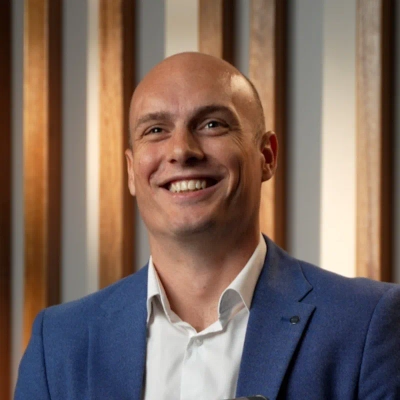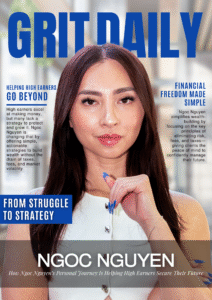Discover practical marketing strategies that won’t break the bank, curated from the experiences of first-time entrepreneurs. This article presents a wealth of cost-effective tactics, from leveraging local press to maximizing social media platforms like LinkedIn and Threads. Drawing on insights from seasoned professionals, these tips offer valuable guidance for startups looking to make a big impact with limited resources.
- Target Local Press for Community Engagement
- Build Brand on LinkedIn with Consistency
- Sponsor Niche Events for Memorable Impact
- Leverage Threads for Referral Partnerships
- Turn Cold Outreach into Storytelling Assets
- Implement Automated Multi-Channel Outbound Strategy
- Cultivate Personal Referral Network for Growth
- Provide Value in Niche Online Communities
- Offer Free Audits for Value-First Outreach
- Focus on High-Touch LinkedIn Conversations
- Leverage Relationship-Based PR for Press Momentum
- Pursue Speaking Opportunities to Build Credibility
- Collaborate with Complementary Startups for Growth
- Partner with Established Businesses for Market Entry
- Craft Compelling Founder Story for Media Attention
- Create High-Quality Content for Social Media Engagement
- Use Newsjacking to Spark Viral Conversations
- Utilize PR for Cost-Effective Brand Awareness
- Engage in Reddit Communities to Solve Problems
Target Local Press for Community Engagement
The most successful and impactful budget-conscious approach will always be prioritizing highly targeted, localized press release campaigns alongside strategic community engagement. This approach proved exceptionally effective. Rather than relying on generic mass distribution, emphasis was placed on niche local publications, community newsletters, and pertinent online groups.
The press release was designed as a compelling narrative outlining the venture’s raison d’être, highlighting its solution to a local issue, and incorporating a human interest element with high-quality imagery. Beyond electronic distribution, more successful methods included personal delivery of copies to small newsstands and community centers, and the provision of exclusive local discounts. Local online forums and social media groups were leveraged to disseminate excerpts and facilitate direct engagement.
This strategy yielded significant results with minimal financial outlay, evidenced by mentions in local newspapers, a feature in a community blog, and a radio interview. This subsequently led to a substantial increase in website traffic and inquiries, fostering community support and trust. Word-of-mouth organically emerged as the most potent marketing instrument, contributing to a remarkably low customer acquisition cost primarily attributable to invested time and strategic effort.
Recommendations for entrepreneurs operating with stringent budget constraints:
- Prioritize Authenticity and Originality: Develop distinctive and memorable methods for audience outreach.
- Leverage Local Media and Community Networks: Local outlets and community groups offer highly engaged audiences.
- Emphasize Storytelling: Connect with the audience by articulating the foundational purpose and advantages of the business.
- Cultivate Relationships: Engage with the community both online and offline, consistently offering value.
- Explore Barter and Collaboration: Exchange services with other local businesses.
- Master the Targeted Press Release: Craft compelling, human-interest press releases tailored for specific niche outlets.
- Embrace Guerrilla Marketing: Employ low-cost, high-impact tactical approaches.
- Optimize Free Online Tools: Maximize the utility of social media platforms, Google My Business, and Search Engine Optimization (SEO).
- Implement Measurement and Adaptation: Systematically track results and pivot strategies as necessitated.
 Misty Schwartz
Misty Schwartz
Editor, Schwartz Entertainment Media Group
Build Brand on LinkedIn with Consistency
As a first-time entrepreneur with limited resources, the single most successful strategy we used was building our brand on LinkedIn. No ad spend. No fancy tools. Just consistency, clarity, and knowing exactly who we were talking to.
At RevenueZen, we didn’t just post for the sake of visibility — we treated LinkedIn like a strategic content channel. We spoke directly to our Ideal Customer Profile (ICP), shared insights from client work, posted wins and flops, and made sure every post sounded like a human, not a brochure.
We didn’t try to go viral. We tried to be useful. The result?
We’ve closed millions in revenue directly from LinkedIn.
That’s not marketing-qualified leads — that’s actual pipeline, actual deals, from people who saw our content, followed the story, and came to us already bought in.
For other entrepreneurs on a tight budget, here’s the move:
1. Get crystal clear on who you help and how.
2. Post three times a week with insight, not fluff.
3. Use comments and direct messages (DMs) like a networking event — show up, be real, be helpful.
4. Don’t outsource your voice. People buy from people, not from “brand copy.”
LinkedIn isn’t just a platform. It’s a trust engine. And if you use it right, it beats paid ads any day — especially when your budget is closer to zero than scalable.
 Rocky Pedden
Rocky Pedden
CEO, RevenueZen
Sponsor Niche Events for Memorable Impact
When I started my productivity app with only $500, I sponsored local speed dating events — listen to me. My target audience was busy professionals who had trouble managing their time, and where can you find people literally addicted to the use of five-minute windows? Speed dating.
I invested in three events at a cost of $300 to sponsor the events by giving out branded conversation starter cards containing productivity tips. The twist? The cards contained a QR code to a so-called productivity compatibility quiz that organically presented my app. This guerrilla tactic was an experiential one, which elicited emotional reactions and left memorable experiences — people recalled the embarrassing-yet-helpful sponsor who was concerned about their time.
The outcomes were amazing: 340 downloads of the app within two weeks (the last month I had 12), and a 23 percent conversion rate to paid subscriptions. Cost per acquisition? $0.88 as compared to $47 using traditional advertisements.
My tip for entrepreneurs on a tight budget: locate where your dream clients gather to have fun that has nothing to do with your product. Guerrilla marketing employs unusual activations and surprise factors to attract attention, which is why it is ideal in the case of startups. Be creative with the obvious places — I have seen massage therapists sponsor tax preparation classes and fitness coaches partner with divorce support groups.
The trick is to deliver real value where people least expect it. It is your most unusual idea that may be your breakthrough.
 Pius Boachie
Pius Boachie
CEO, DigitiMatic
Leverage Threads for Referral Partnerships
Focus on building your connections just as much as visibility. Threads has been a great resource for marketing my business, but it’s been equally great at finding referral partners.
Yes, I marketed my copywriting business extensively on Threads by posting content. However, after a while, people on Threads started recommending me to their network because they were familiar with my voice and my work.
Whether you choose the Threads route or another platform, don’t just try to bring in more business. Focus on the connections that will make your business sustainable over the long run.
 Delaney Rietveld
Delaney Rietveld
Website Copywriter, Dark Roast Copy Co.
Turn Cold Outreach into Storytelling Assets
I scaled my bootstrapped company from $100 in the bank to more than $1M+ today serving e-commerce, fintech, and healthcare clients. I launched with under $100 and no ad spend by turning cold outreach into storytelling assets.
I targeted early-stage e-commerce founders, offered free site audits for permission to share results, then posted before-and-after stories on LinkedIn tagging each founder.
Within three weeks, posts averaged 150 likes, and two founders paid $1,200 and $1,500 for redesigns. I repurposed the top three stories into a free 20-minute workshop, converting six of ten attendees at $300 each. Handwritten thank-you notes earned two referrals at 50 percent conversion, adding $2,000. Total net profit: ~$9,100.
Tip: Exchange free value for shareable proof, amplify it organically, and add personal touches to ignite word-of-mouth.
 Shantanu Pandey
Shantanu Pandey
Founder & CEO, Tenet
Implement Automated Multi-Channel Outbound Strategy
As a long-time marketer, it is very rare (almost unheard of) to execute a single successful marketing strategy. By its very nature, marketing requires consistent execution across multiple channels to be effective. Having said that, as a recent first-time entrepreneur, the most successful place to start has been automated outbound strategies that integrate multiple channels.
For little more than the cost of a daily coffee, I use a platform (essentially an AI agent) that helps me identify potential buyers in my Ideal Customer Profile (ICP). I screen those personas with multiple filters to build my perfect contact database. I then send them an email (optimized for opens using very simple, non-sales subject lines) offering a point of view on their challenge and a link to resources I think would be helpful.
The platform then imitates a profile view on LinkedIn, then a day later sends them a connection request. If they accept, it sends a follow-up a few days later referencing the topic in the email and offering a free-trial link for my product as I think it might be useful. The sequence goes on to follow up with more useful information, request feedback, and stops when a contact responds. At which point, I step in with a human touch.
This approach is cheap and has many benefits. Firstly, it only targets your ICP and ideal persona. It has multiple automated touches that require very little monitoring; it just runs 24/7 in the background. I have achieved 45% open rates on emails, 25% connection acceptances (growing my social audience), and 2% response/sign-up rate. It isn’t hugely scalable (you can’t put thousands of contacts a week through it due to the limits on the number of LinkedIn connection requests allowed), but I do consistently grow my audience and free up time to focus on long-term strategies such as content development and SEO.
 Steven Manifold
Steven Manifold
CMO & Director, B2B Planr
Cultivate Personal Referral Network for Growth
One of the most successful (and underrated) marketing strategies I used as a first-time entrepreneur wasn’t flashy; it was simply working my referral network.
When I launched my company in 2023, I didn’t have a big ad budget or an outbound sales team. What I did have was nearly two decades of professional relationships, and those became the engine of our growth. In fact, over 90% of our clients have come through personal referrals.
I have a shortlist of people I reach out to strategically, but the real key isn’t just staying in touch; it’s staying visible. Even simple organic posts across LinkedIn, Facebook, and Instagram can remind people what you do and keep you top of mind.
One example: someone on LinkedIn posted that they needed marketing support, and a former co-worker from 17 years ago tagged me. I reached out and landed the business a month later. In another case, a colleague I hadn’t spoken to in years messaged me because her new company was looking for branding support. She worked in HR but believed in my work enough to recommend me beyond her scope and invite me to submit an RFP.
Neither of these examples were contacts I had conversations with in years, but they had seen the growth of my agency through social media and, more importantly, they already trusted me.
If you’re building a business on a tight budget, don’t underestimate the value of the relationships you’ve already earned. Advertising might get your name out there, but trust is what turns conversations into contracts. Show up consistently, share what you’re doing, and let people see how you help others. Those small efforts add up and often lead to the next opportunity.
 Kyle Senger
Kyle Senger
Founder & Lead Strategist, Unalike Marketing
Provide Value in Niche Online Communities
As a first-time entrepreneur with a limited budget, one of the smartest strategies I implemented was leveraging niche communities instead of broad advertisements.
I had just launched a small productivity tool, and rather than investing money in Facebook or Google Ads (which I couldn’t afford anyway), I spent time being genuinely active in 3-4 relevant Reddit threads, Slack groups, and indie founder forums like Indie Hackers.
However, I didn’t start by posting links to my product — that’s a quick way to get ignored or banned. Instead, I provided value: answered questions, shared how I built certain features, and offered honest insights. Then, when the time felt right, I mentioned, “Hey, I actually built something for this — happy to share if anyone’s curious.” That one comment brought in my first 300+ users.
The result? Within 6 weeks, I had 1,000+ users, zero ad spend, and a solid list of beta testers who actually gave useful feedback.
My advice to fellow entrepreneurs:
If you’re short on money, be rich in time and honesty. Show up where your audience already is, contribute without expecting anything immediately, and then naturally invite them into what you’re building. Relationships convert better than any paid click — especially when you’re just starting out.
 Anshul Rana
Anshul Rana
Top Rated Plus Technical SEO Expert, The Digital Geek
Offer Free Audits for Value-First Outreach
One of the most successful marketing strategies I used early on, with barely any budget, was building partnerships through value-first cold outreach. Instead of just pitching services, I’d audit a local business’s online presence for free and share 2-3 actionable suggestions via email. No strings attached. That instantly showed them I understood their market and could actually help.
This approach helped us land our first five clients in different niches, all within the first two months. It wasn’t just about showing skills; it built trust. These businesses became long-term clients, and a couple even referred others our way without us asking.
To any entrepreneur starting out on a tight budget, I’d say:
Start by solving real problems for free before selling anything — it’s the fastest way to build trust and get paid work without spending a dime on ads.
 Chasen Mushiana
Chasen Mushiana
Founder, Beazy Marketing
Focus on High-Touch LinkedIn Conversations
One of the most effective strategies I used early on with no budget was direct outreach on LinkedIn. No ads, no funnels. Just a spreadsheet of warm prospects and a calendar link.
I wasn’t trying to sell in the first message. I just wanted to start a real conversation.
Each message was tailored to the person. I didn’t use copy-paste intros. I’d point out something in their positioning or messaging that could be stronger.
If they were open to it, I’d share a quick suggestion or framework. This often led to a strategy call, which turned into a paid engagement.
In the first three months, this approach brought in over $25,000 in revenue with zero spend.
A lot of early-stage entrepreneurs get stuck building things that don’t move the needle, such as logos, websites, or content that doesn’t convert.
So when money’s tight, it makes more sense to focus on feedback loops. Talk to people. Test your offer in real conversations.
This is how you figure out what actually lands before trying to scale anything.
For anyone on a tight budget, skip the volume game. Focus on clarity.
High-touch outreach won’t scale. But it gives you signal fast.
Once you know what’s working, then you can think about automation or paid channels.
Until then, the fastest way to cash flow is usually one conversation at a time.
 Josiah Roche
Josiah Roche
Fractional CMO, JRR Marketing
Leverage Relationship-Based PR for Press Momentum
One of the most successful marketing strategies I implemented as a first-time entrepreneur with limited resources was relationship-based PR — leveraging authentic, personal connections to build early press momentum without spending a dime on ads. When I launched my business, I didn’t have a huge budget, but I had a story, a clear vision, and a genuine network I’d built over years as a young journalist. I started by reaching out personally to editors, writers, and fellow creatives — not to pitch blindly, but to offer something valuable: compelling stories about underdog artists doing big things.
The result? We landed early press for clients in outlets like Sweety High, Music Row, and People, all through personalized outreach and thoughtful positioning. That organic credibility opened doors, helped grow our client base, and proved we could deliver results without a massive marketing budget.
 Trevor Perkins
Trevor Perkins
Founder, PERK PR & Creative Agency
Pursue Speaking Opportunities to Build Credibility
As a first-time entrepreneur with limited resources, one of the most effective strategies I used was focusing on speaking opportunities. Instead of trying to compete with larger marketing budgets, I pitched myself to speak at industry events, webinars, and panels where I could share practical insights on paid media and digital advertising.
This approach helped me build credibility, expand my network, and generate leads without spending on ads. It also led to media features, podcast invites, and long-term client relationships.
For entrepreneurs on a tight budget, I’d recommend looking for small events, local meetups, or virtual conferences where your expertise could be valuable. You don’t have to be on the biggest stage to make an impact. If you can clearly communicate what you know and how it helps others, people will remember you, and that opens doors.
 Lisa Raehsler
Lisa Raehsler
Founder, Principal Strategist, Big Click Co
Collaborate with Complementary Startups for Growth
I leveraged co-marketing partnerships by reaching out to three non-competing startups that serve the same audience — an e-commerce UX agency, a boutique PR firm, and a Shopify app developer — and proposed a simple swap.
Each of us wrote a 200-word shout-out to the others’ services in our weekly email newsletter.
We combined these cross-promotions into a joint, 30-minute webinar on “Video Marketing on a Shoestring.”
The results after six weeks were eye-opening:
- 200+ new newsletter subscribers
- 12 discovery calls booked
- 5 new clients signed (with a combined first-month revenue of over £7k)
My recommendation for founders:
1. Find complementary, non-competing brands targeting your ideal customer.
2. Propose low-effort swaps — email shout-outs, guest blog posts, or a one-off webinar.
3. Measure everything in a shared spreadsheet so you can quickly identify which partner drives the best leads and double down there.
No ad spend required — just smart collaborations and mutual audience exchange.
 Rudy Heywood
Rudy Heywood
Founder, Famous Wolf Group Ltd
Partner with Established Businesses for Market Entry
One of the most successful marketing strategies I implemented as a first-time entrepreneur with limited resources was partnering with complementary businesses. Our brand focuses on high-quality razor blades for barbers, and we now operate in over 30 countries and in multiple languages — a reach that was made possible in large part through strategic partnerships.
By collaborating with partners who were already well-connected in the grooming and barbering industry, we were able to tap into their networks and gain immediate trust and visibility. This approach allowed us to enter new markets efficiently, without the need for large marketing budgets or complex ad campaigns.
The results were significant: we quickly built brand awareness in niche markets, saw rapid international adoption, and created long-term relationships that continue to support our growth.
For other entrepreneurs working with tight budgets, I highly recommend focusing on partnerships with businesses that share your target audience but aren’t direct competitors. It’s one of the most cost-effective ways to scale, build credibility, and grow your footprint globally.
 Moritz Neugebauer
Moritz Neugebauer
Founder, My-Blades
Craft Compelling Founder Story for Media Attention
One successful marketing strategy I implemented as a first-time entrepreneur with limited resources was leveraging storytelling through earned media and strategic outreach. I didn’t have a big budget for ads or influencers, so I focused on crafting a compelling founder story — one that blended vulnerability, innovation, and a clear mission. I pitched that story to journalists, appeared on niche podcasts, and connected with local media who were eager to spotlight underrepresented voices in entrepreneurship.
One of my first major wins was landing an interview on a well-respected TV segment, which then opened the door to podcast interviews, speaking invitations, and word-of-mouth referrals. This ripple effect not only drove traffic to my app but also helped position my brand as purpose-driven and relatable.
The result? Organic downloads increased by over 200% in three months, and I built a loyal early user base without spending a dime on paid marketing.
My advice to other entrepreneurs on a tight budget:
Don’t underestimate the power of your personal story. People invest in people more than products, especially at the early stages. Take the time to craft your narrative, pitch it to aligned outlets, and show up authentically. Visibility doesn’t have to be expensive — it just has to be strategic and genuine.
 Lorene Cowan
Lorene Cowan
Founder, Yoke Dating App
Create High-Quality Content for Social Media Engagement
I focused on creating high-quality content, behind-the-scenes art photos, videos of the finished product (printed and framed in museum-quality materials), process shots, and time-lapses for selling art on Instagram and Facebook before establishing an online art gallery. This approach organically built interest and engagement without spending a dollar on ads.
To maximize visibility and reach, I used free-tier tools like SEMrush to research relevant keywords, looking at search volume, difficulty, and intent, which helped me optimize product pages and create content that aligned with what potential buyers were actually searching for.
Later on, to convert that traffic, I used Klaviyo’s free tier to build an email list and set up simple automations, like welcome flows and back-in-stock alerts, that nurtured interest and drove repeat sales. The results? A steady stream of organic traffic, a 35% email open rate, and consistent sales of prints and originals without a large marketing budget.
For entrepreneurs on a tight budget: focus on storytelling, build a loyal audience on one platform, and turn attention into ownership via email. It compounds over time and doesn’t cost you every time you want to reach your customers.
 Joe Papagoda
Joe Papagoda
Marketing Pro & Fine Artist | CEO, Artfinest.com
Use Newsjacking to Spark Viral Conversations
As a startup founder with limited resources, my most successful marketing strategy has been leveraging newsjacking with a personal twist. I combine breaking industry news with my unique perspective to spark viral conversations on LinkedIn.
For example, when Salesforce announced its acquisition of Informatica, I created a LinkedIn post to translate what this meant for sales and competitive intelligence teams like the one my startup serves. I framed the post around why CI matters more than ever in high-stakes acquisitions like this.
The post went viral and received over 440,000 views, 1,500 comments, and resulted in 100+ new connection requests from contacts in my target market (Sales Managers, RevOps Leads, and Heads of Sales Enablement). Reaching out to these new contacts resulted in real conversations where I could position my startup as a valuable tool for their sales teams.
 Paul Towers
Paul Towers
Founder & CEO, Playwise HQ
Utilize PR for Cost-Effective Brand Awareness
When my company started up, we didn’t have much cash to pay for ads. So, I had to be creative. I leveraged something called PR, i.e., reaching out to blogs, media, and small-time personalities who might be willing to hear our story.
I made our brand sound cool and unique. I shared funny, true-life stories about our designs and how we help brands reach people. These stories went live on the Internet, and you know what happened? People started coming to our site and ordering! We didn’t even pay to advertise.
I’ve had 20 years in marketing in China, Britain, and North America. I’ve built up audiences for every kind of business using smart tools like:
- Cross-device attribution (identifying where customers come from on the internet)
- Performance content (making content that produces tangible results)
- Franchise expansion marketing (helping businesses expand in many locations)
So when it came time to build my own business, those were the kinds of talents I drew on. With zero capital, I knew how to take a small thing and make it look big, and quantify what made it big.
If you aren’t rich, it doesn’t matter. Just pay attention to:
- Narrating your story very well
- Reaching out to those who care about what you’re doing
- Utilizing all the small wins (such as a blog post or tweet) to establish trust
You don’t need to become viral. You only need to be genuine, brief, and original. That’s how we expanded, and you can expand too!
 Linda Yang
Linda Yang
Co-Founder, Digital Marketing Strategist, PR & Content Marketing, Toteprint.com
Engage in Reddit Communities to Solve Problems
One trick that’s effective in getting your first customers is getting in the trenches on Reddit. There are tons of niche subreddits that are active, and if you’re solving a real problem, people have almost certainly posted a question asking how to solve it. That’s an opportunity to plug what you’re building. In my case, I often bring up companies that I’ve invested in. It’s one of the ways that I add values as an investor, and also one of my tricks as a founder myself.
What’s harder is breaking into TikTok or Instagram Reels. You can really only do that if your product has natural virality, or if you have a muscle for coming up with viral content. As an example, my company’s mascot is a cow, and one time I even arranged to have a live cow delivered to a museum in New York City.
 Neel Somani
Neel Somani
Founder, Eclipse Laboratories Inc.








